Tudor Pancakes Galore!
In this second week of the Great Tudor Bake Off, we will be making simply delicious Tudor pancakes. While some Tudor recipes are a little tricky, or don’t suit modern tastes, there are no such problems for the twenty-first century palate to contend with here. Below you will find a range of different Tudor recipes for cooking pancakes, which should be enjoyed simply by sprinkling them with icing sugar – Tudors did not fill them as we do today. However, of course, what you do with your pancakes is up to you! Happy baking!
The Origin of Tudor Pancakes
February is generally a sober month – and not just because it happens to be the month in which 3 sixteenth century queens met their early, and violent, deaths. Through this month, we have been celebrating the lives of three Tudor queens by visiting places with which they were associated: Fotheringhay Castle (Mary Queen of Scots), Oatlands Palace (Catherine Howard) and Bradgate House (Lady Jane Grey). The naturally shorter days, the cold, combined with the fact that less fresh meat and vegetables were available during this month, meant that most people had to rely on preserved food. This did little to keep spirits high!
However, before the Reformation, the Roman Catholic church provided some respite from the long, hard slog of winter by punctuating this period with several religious ‘holi-days’ in form of feasts. The wildest of these feasts in the Christian calendar was ‘Carnival’, whose name derives from carne (meat); it was celebrated on Shrove Tuesday (Mardi Gras – Fat Tuesday).
The word ‘Shrove’ comes from the verb ‘to shrive’, meaning to confess one’s sins and be absolved. This particular ‘Holi-day’ was a riotous orgy of indulgence, during which any remaining meat and animal products, like butter and cheese, had to be consumed prior to the 40-day fast of Lent. This stretched from Ash Wednesday to Easter Day. Naturally, before the fast was a time of incredible indulgence; people consumed large quantities of meat and drink, and treats like waffles and pancakes – doused in butter.
During the Reformation, an increasing number of people abolished practices like fasting and the aforementioned Roman Catholic feasts. ‘Carnival’ was one of those which was the first to disappear, and by the seventeenth century it was no longer celebrated in England. However, today, most Christians still eat pancakes on Shrove Tuesday, a remnant of this earlier tradition.
As pancakes were a treat which all 3 condemned queens would have known and enjoyed, and with Shrove Tuesday coming up on 5 March (2019), what better opportunity than to provide you with three easy to prepare, tasty and historic pancake recipes?
Tudor pancakes were made with a simple basic mixture that was popular with all classes, although the rich often dressed them up with more elaborate ingredients. They made hearty meals using only the simple ingredients of flour, milk, salt and egg. If milk was not available it could be substituted with almond milk, ale, beer or even wine! Sometimes pancakes were used to wrap up other food, like bacon or cheese, and taken to eat in the field as part of the working day.
Note: Unlike modern pancakes, Tudor pancakes are all very thin and when fried, become crisp.
Recipe 1: Tudor Pancakes in the manner of Tournai (Crespes a la guise de Tournay), from ‘Le Menagier de Paris’, circa 1393.
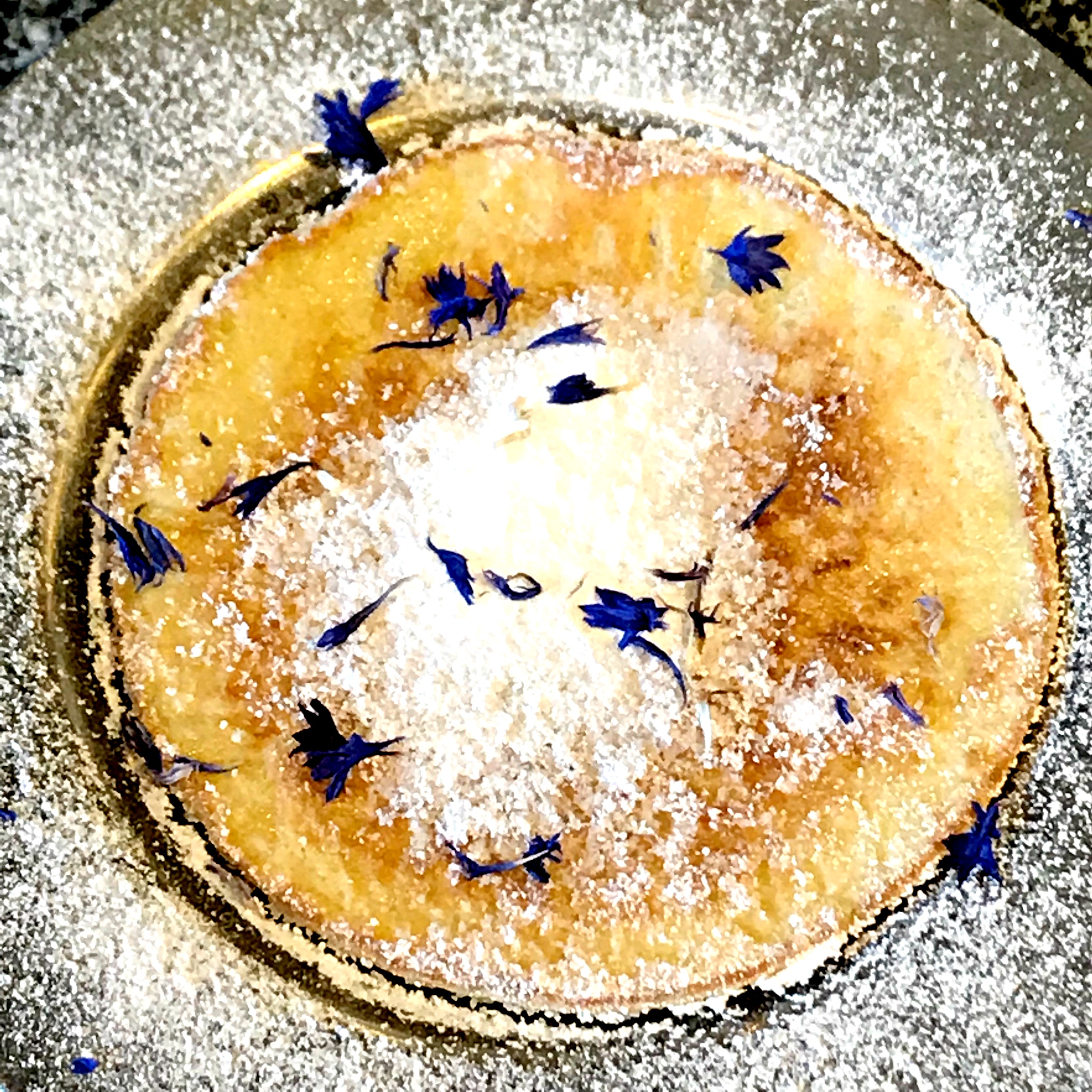
- ¾ cup (100g) flour
- 3 eggs
- 6 tablespoons white wine
- 6 tablespoons water
- ¼ teaspoon salt
- butter & lard (animal fat) for frying
- sugar for sprinkling, preferably superfine (icing)
Add the salt to the eggs, beat them with a wire whisk, then gradually beat in the flour. Add the wine and the water, and whisk to combine. Leave to rest for one hour. Heat the crepe pan or nonstick skillet over medium heat; add ½ teaspoon each of butter and lard. When sizzling, add a small ladleful of batter, swirling the pan to spread the batter evenly over the entire surface. When golden brown, turn the crepe over and lightly brown the second side. Pile finished crepes on a warmed plate and sprinkle each with sugar.
Note: Modern adaptation and translation taken from The Medieval Kitchen – recipes from France and Italy, by O Redon, F Sabban, S Serventi.
Recipe 2 : To Make Pancakes From ‘The Good Huswifes Handmaide for the Kitchen’, by Thomas Dawson, England, 1588.
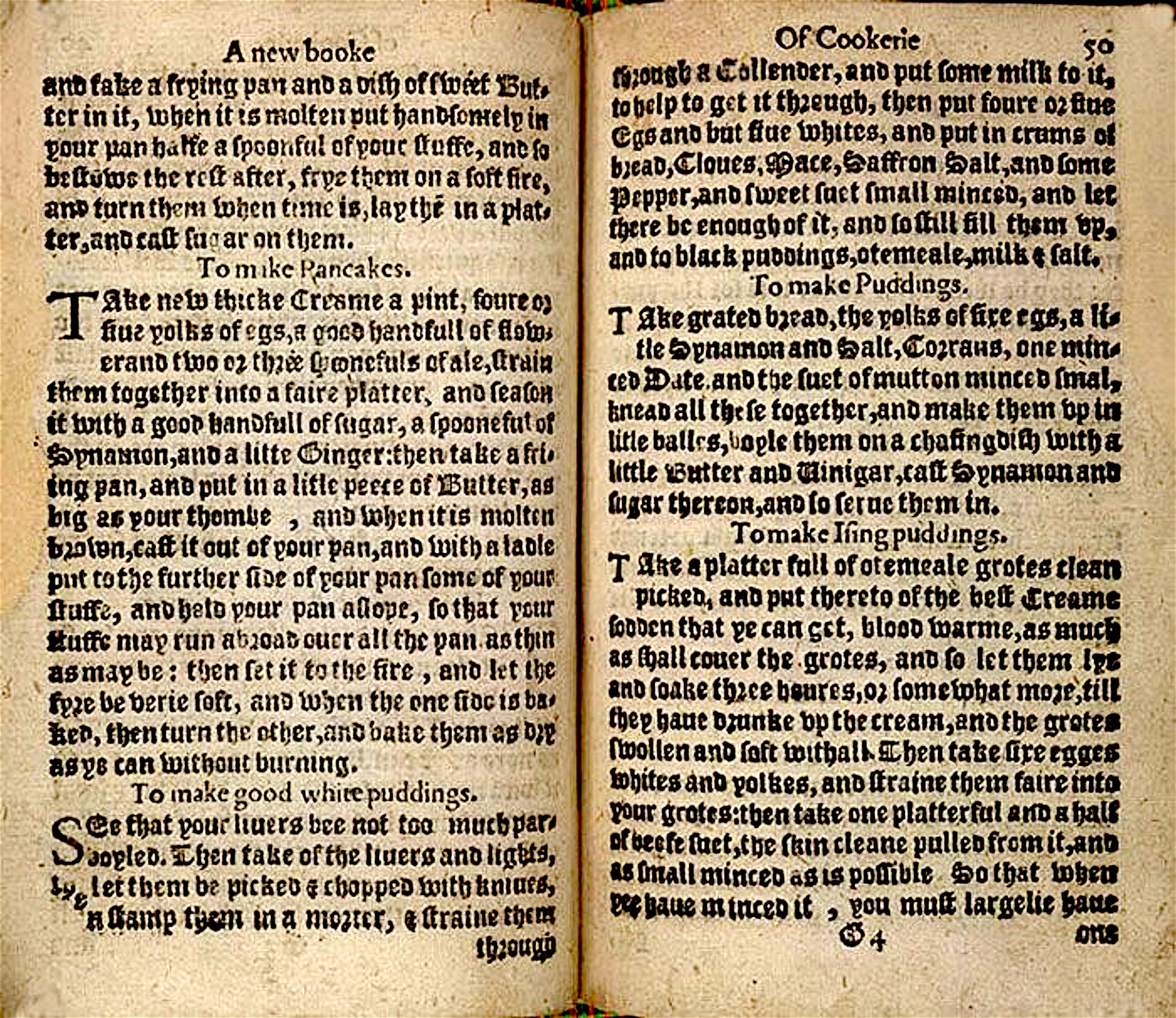
The Good Huswifes Jewell – pancakes and puddings
‘Take new thicke Creame a pinte, four or five yolks of Egs, a good handful of flower, and two or three spoonfuls of Ale, strain them altogether into a faire platter, and season it with a good handful of Sugar, a spoonful of Synamom, and a litle Ginger: then take a frying pan, and with a ladle out to the further side of your pan some of your stuffe, and hold the pan aslope, so that your stuffe may run abroad over all your pan, as thin as may be: then set it to the fyre, and let the fyre be verie soft, and when the one side is baked, then turne the other, and bake them as dry as ye can without burning.’
‘Take new thick cream a pint, four or five yolks of eggs, a good handful of flour, and two or three spoonfuls of ale; strain them altogether into a fair platter [bowl], and season it with a good handful of sugar, a spoonful of cinnamon and a little ginger: then take a frying pan, and with a ladle [pour] out to the further side of your pan some of your stuff [mixture], then tilt the pan so that your stuff [mixture] may run all over your pan, as thin as may be: then put it over the heat and let the heat be very soft [low], and when the one side is baked, then turn the other, and bake them as dry as can be without burning.’
Recipe 3 : To make Pancakes, from ‘The Accomplisht Cook’ by Robert May. 1660. English.
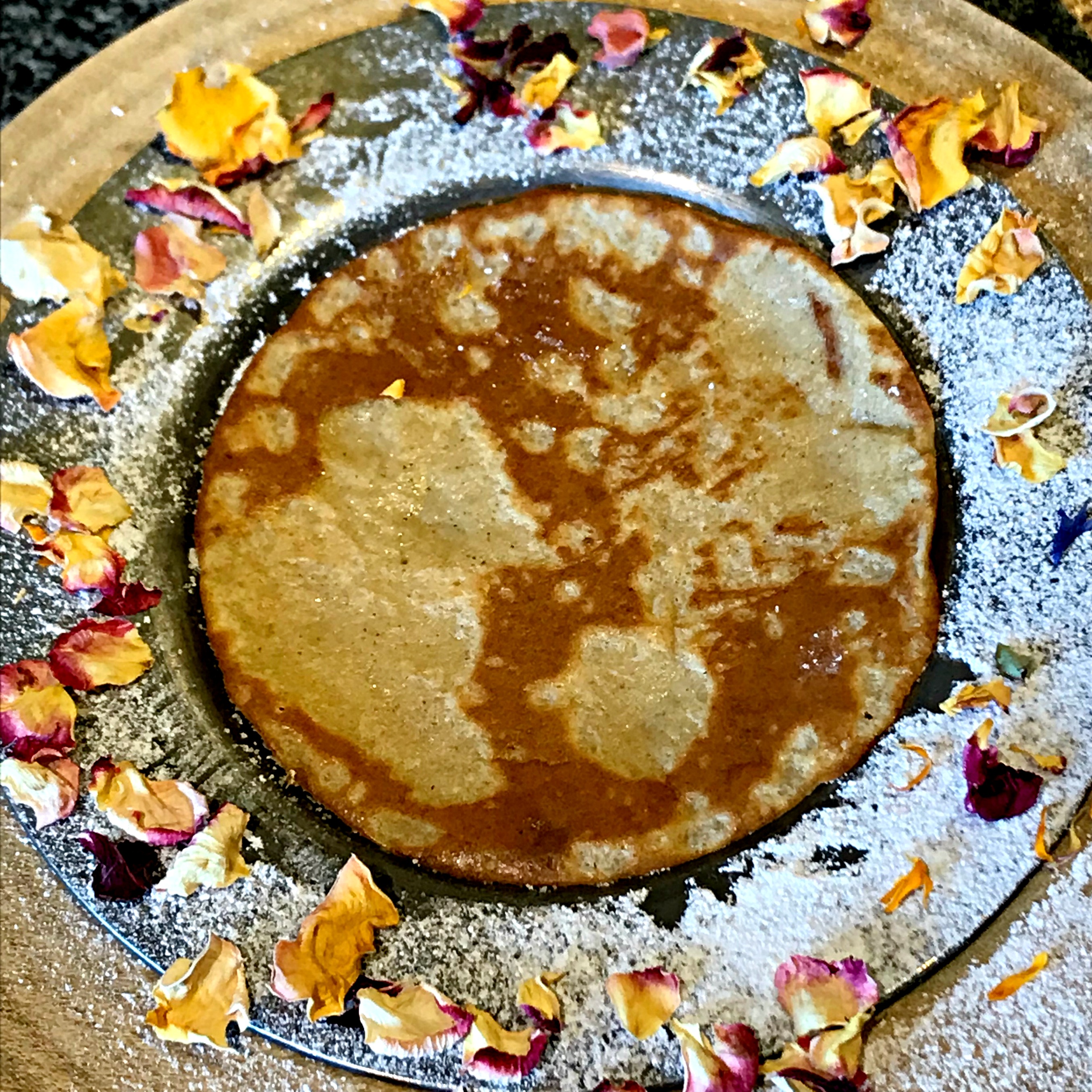
Here are four alternative ways to make pancakes, according to The Accomplisht Cook:
- Take three pints of cream, a quart of flour, eight eggs, three nutmegs, a spoonful of salt, and two pounds of clarified butter; the nutmegs being beaten, strain them with the cream, flour and salt, fry them into pancakes, and serve them with fine sugar.
- Alternatively, take three pints of spring water, a quart of flour, mace, and nutmeg beaten, six cloves, a spoonful of salt, and six eggs, strain them and fry them into pancakes.
- Or thus, make stiff paste of fine flour, rose water, cream, saffron, yolks of eggs, salt, and nutmeg, and fry them in clarified butter.
- Take three pints of cream, a quart of flour, five eggs, salt, three spoonfuls of ale, a race of ginger, cinnamon as much, strain these materials, then fry and serve them with fine sugar.
May gives you several options, but please reduce the quantities given to your needs as he quite clearly caters for a party or very hungry people! I have chosen to try the one made with ale (the last one) and the one with rose water.
Recipe 4 : To make pancakes, from ‘The Whole Body of Cookery Dissected’, William Rabisha, 1682
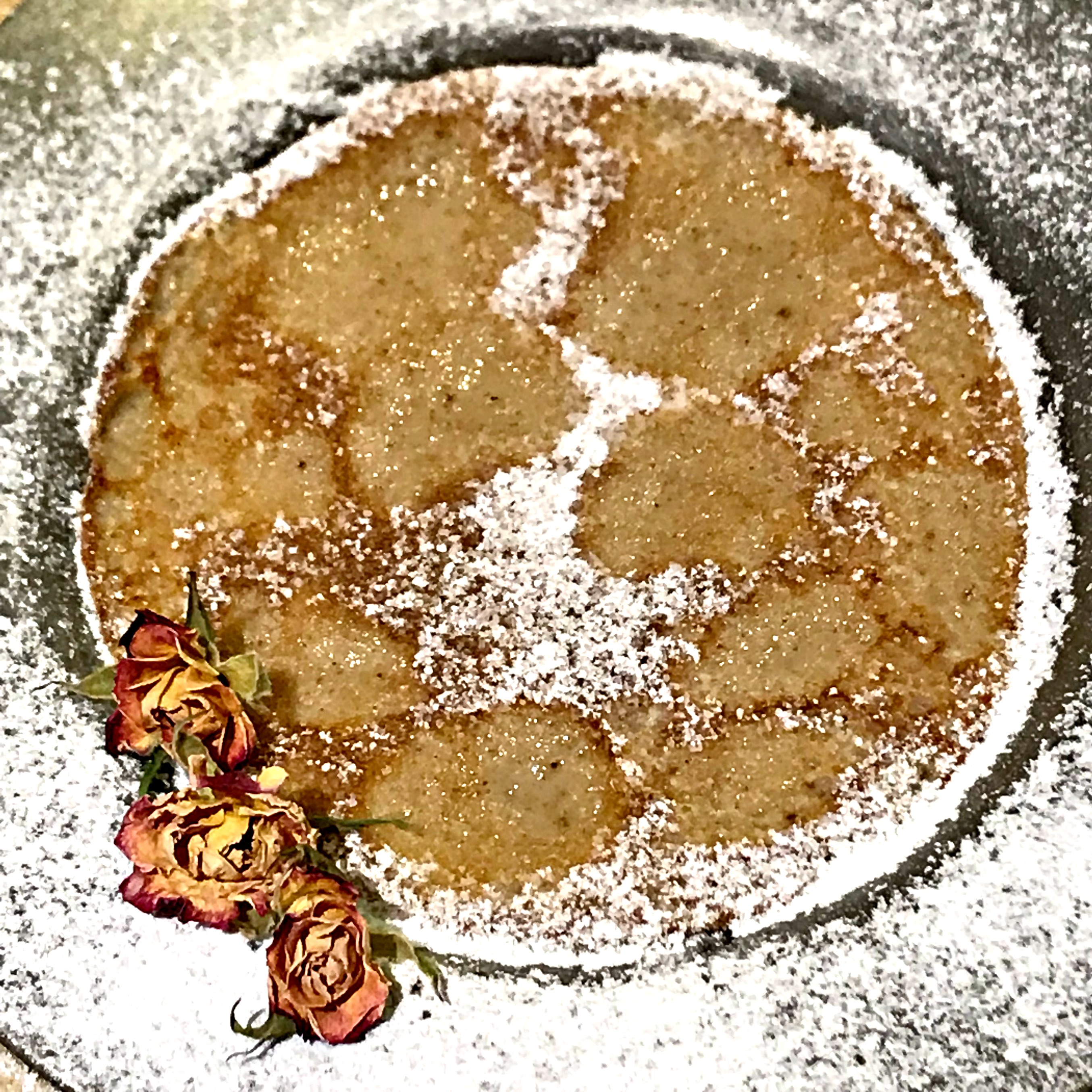
“Put to a pottle of flower eight eggs, casting by four whites, season it with cinnamon, nutmeg, ginger, cloves, mace and salt, then make it into a strong Batter with milk; beat it well together, and put in half a pint of sack, make it so thin, that it may run in your pan as you please; put your pan on the fire with a little butter or suet (animal fat); when it is very hot take a cloth and wipe it out, so make your pan very clean, then put in more butter, and hold on your pan till it is melted, put in your batter, and run it very thin, supply it with little bits of butter, so toss it often, and bake it crisp and brown.”
Note: ‘Sack’, a sweet wine fortified with brandy (known today as sherry), was popular with the Elizabethans.
Recipe 5 : To Fry the Best Kind of Pancakes, from ‘The Sensible Cook’, by Peter G Rose.
Take 5 or 6 eggs beaten with clean, running water, add to it cloves, cinnamon, mace and nutmeg with some salt, beat it with some wheat flour as thick as you like, fry them and sprinkle them with sugar; these are prepared with running water because (when prepared) with milk or cream they would be tough.
 Each week, our Tudor recipe is contributed by Brigitte Webster. Brigitte runs the ‘Tudor and 17th Century Experience‘. She turned her passion for early English history into a business, and opened a living history guesthouse, where people step back in time and totally immerse themselves in Tudor history by sleeping in Tudor beds, eating and drinking authentic, Tudor recipes. She also provides her guests with Tudor entertainment. She loves re-creating Tudor food and gardens, and researching Tudor furniture.
Each week, our Tudor recipe is contributed by Brigitte Webster. Brigitte runs the ‘Tudor and 17th Century Experience‘. She turned her passion for early English history into a business, and opened a living history guesthouse, where people step back in time and totally immerse themselves in Tudor history by sleeping in Tudor beds, eating and drinking authentic, Tudor recipes. She also provides her guests with Tudor entertainment. She loves re-creating Tudor food and gardens, and researching Tudor furniture.
Sources used and further recommended reading :
- Food in Early Modern Europe, by Ken Albala.
- Food in Early Modern England, by Joan Thirsk.
- Le Menagier in Paris (circa 1393).
- The Good Huswifes Handmaide for the Kitchen, by Thomas Dawson, 1558.
- The Accomplisht Cook, by Robert May, 1660.
- The Whole Body of Cookery dissected, by William Rabisha, 1682.
- Cake – A Global History, by Nicola Humble.
- Renaissance Food from Rabelais to Shakespeare, Ed., by J. Fitzpatrick.
- A Cultural History of Food in the Renaissance, Ed., K. Albala.

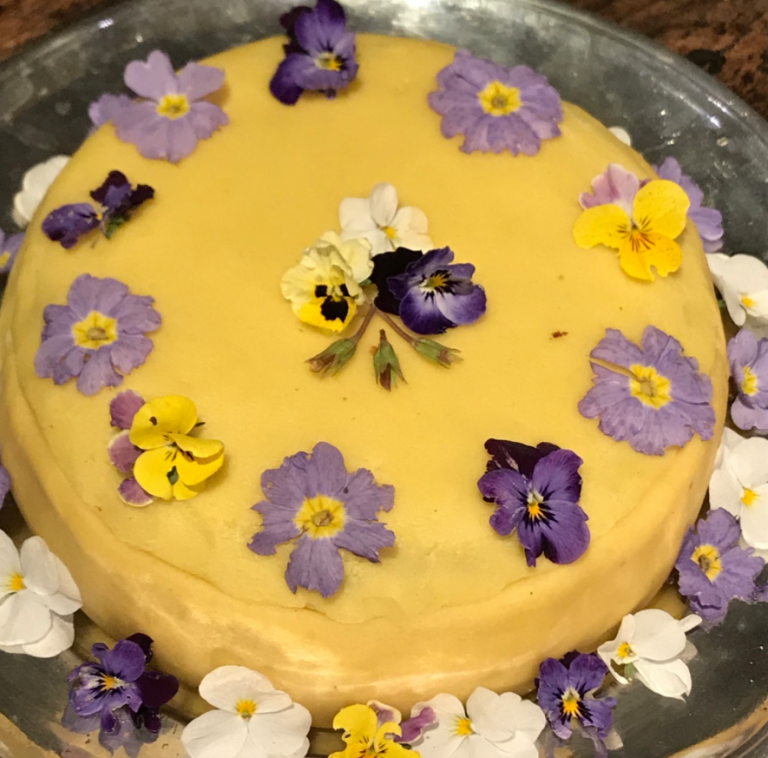
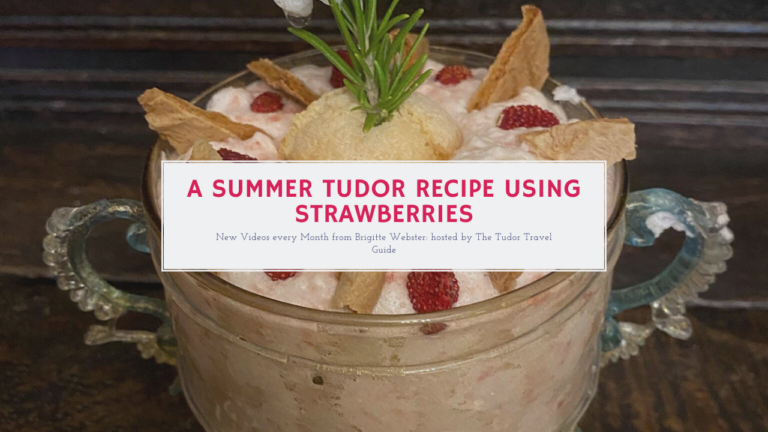
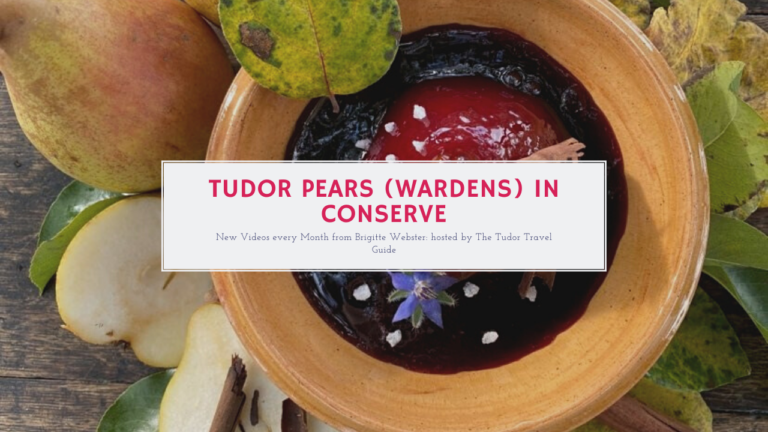
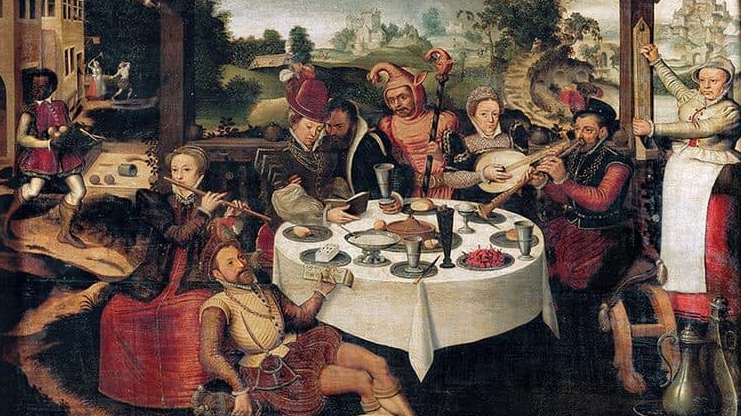

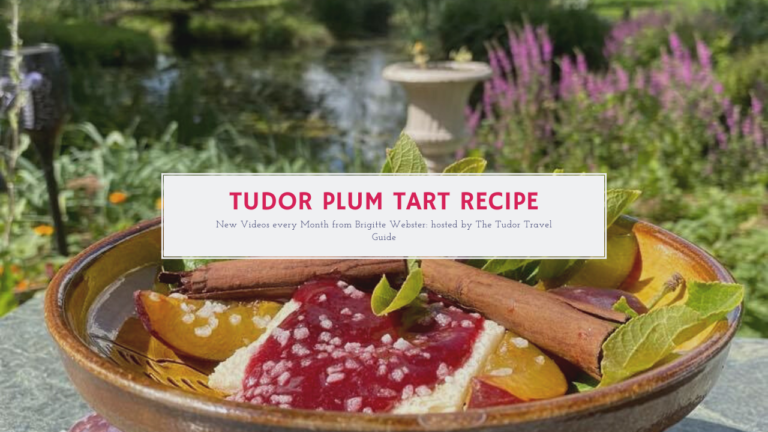
One Comment